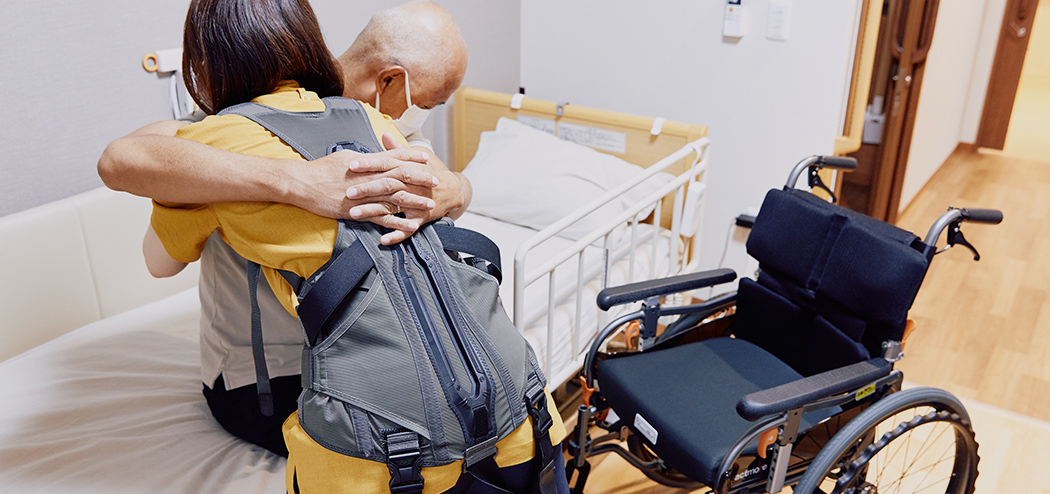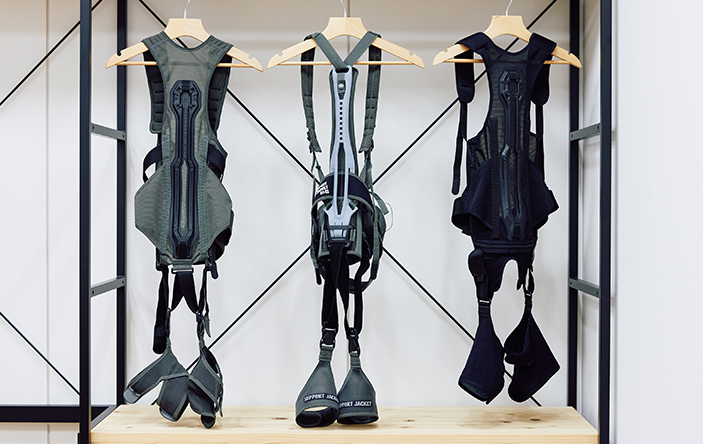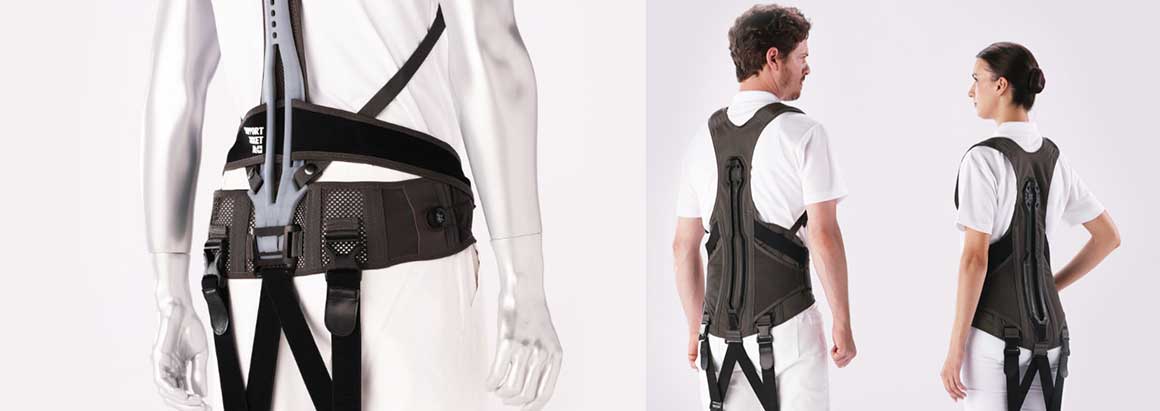Case
SUPPORT JACKET Bb+ uses a uniquely developed “backbone (Bb+)” technology with three key features: a posture correction function that keeps the upper body and lower back in a healthy, low-impact position; a lumbar support function that enhances abdominal strength; and a muscular function that provides assistive force. This three-in-one support is delivered via a wearable device that is lightweight, affordable, and easy to use.

On-Site Testing
SUPPORT JACKET Bb+PRO II
Future Care Lab in Japan selected the Bb+ PRO SUPPORT JACKET after carefully comparing multiple technologies. When our physical therapist observed and analyzed the changes in posture before and after wearing the jacket during our testing and evaluation process, we found it to be particularly effective in support of repetitive caregiving motions. This gave the development company confidence in recommending the product.


From
the Development Company
We had been looking for a way to alleviate lower back and general physical strain on operators engaged in difficult labor—including those loading and unloading customer cargo at logistics worksites tied to our original parent business—so in 2010 we entered into a joint development project on a powered exoskeleton with the Tokyo University of Science. Full-scale rollout of the project began in 2014, and our company continued to develop assistive suits that were lightweight and affordable to address the problems with them at the time; namely, they were heavy and expensive. We completed the SUPPORT JACKET Bb+PRO in 2016, the SUPPORT JACKET Bb+FIT in 2018, the SUPPORT JACKET Ep+ROBO in 2019, and the SUPPORT JACKET Bb+PRO II in 2020.
Future Care Lab in Japan (“the Lab”) approached us during a trade show about a solution that would alleviate back strain on caregivers who made home visits to help with bathing tasks. That was how we started working together. They started by doing a trial introduction at a Sompo Care facility. Based on feedback about cost and from on-site personnel who actually wore the devices (and found them hot with prolonged use, for example), we set out to develop the SUPPORT JACKET Bb+PRO II, a more comfortable, lower-cost suit that would still offer the needed assistance. Once the on-site testing and evaluation was complete, the Lab took charge of giving out product information at other Sompo Care facilities. I thought they set up a wonderful system for reliably sharing product information they had deemed critical as a result of their testing and evaluation.
We’ve sold a total of 17,000 SUPPORT JACKET Bb+ series products to date, and they’re currently being put to work at many nursing care sites as well as in the usual manufacturing, logistics, and agricultural settings. We’ve also been getting more orders from overseas lately. We’re now looking to develop an even more user-friendly assistive suit, something that might even be used in regular retail settings like a typical work uniform.


From
Future Care Lab in Japan
Nursing care sites had been looking for a device that would reduce back strain during tasks that require constant bending over, such as bathing assistance or transferring people from beds to wheelchairs. We searched high and low for a solution before arriving at the SUPPORT JACKET Bb+ series.
We started by verifying the effects of the suit in the Lab, but we struggled to come up with a way to evaluate it since the technology wasn’t designed to support muscular movement but rather serve as a second spine to keep people in a proper posture. We had one of our physical therapists on staff look at how caregivers moved before and after wearing the suit in order to assess posture changes, and then later conducted testing and evaluation on caregivers actually performing bathing assistance tasks, either in facilities or during in-home visits. Our assessments found that while the suit felt a bit awkward when wearing it across multiple tasks (such as throughout bathing, excretion, and transfer assistance), it was effective during repetitive motion (such as helping several people with bathing back-to-back).
After testing and evaluating the product at multiple caregiving facilities and during in-home services, we sent out information to various facilities letting them know that the suit could be introduced for assistive tasks that involved certain kinds of motion. The project underlined the importance of involving multiple perspectives, including frontline feedback and expert insights, in the testing and evaluation process.
Interviews based on information current as of September 2021.
OTHER CASE